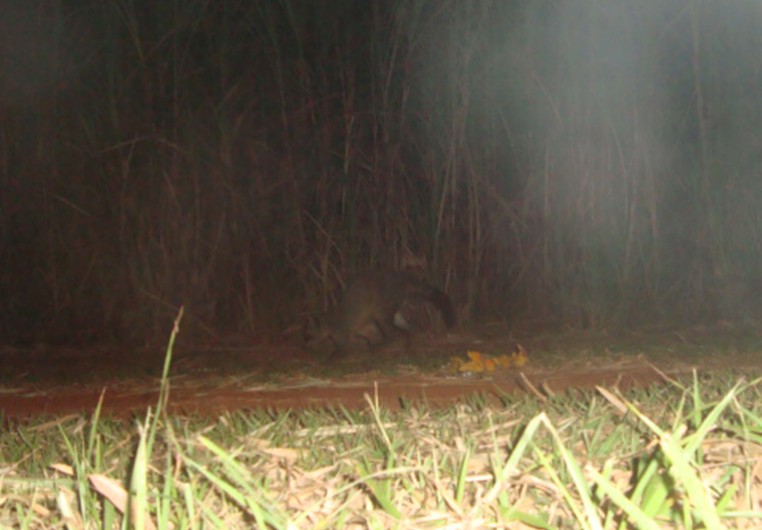Biodiversity
< Back

 Crab-eating Raccoon
Procyon cancrivorus | G. [Baron] Cuvier, 1798
Crab-eating Raccoon
Procyon cancrivorus | G. [Baron] Cuvier, 1798

PHOTO: Property of Native / Embrapa
Characteristics: This species' body length varies from 40 to 100cm, with a tail measuring 34 to 40cm, which is decorated with black rings among yellowed areas. It has a pointed snout, and its body has dense, yellowish fur with black tips, giving the coat a yellowish-gray coloring. It is called a "mão-pelada" (naked hand, in Portuguese) because its footprints resemble that of the open human hand.
Distribution: South America - Andes, Chile, Bolivia, Peru, Ecuador, and throughout Brazil - although already in the process of disappearing.
Habitat: Woods and surrounding water (rivermouths and mangroves).
Habits: Solitary, nocturnal species; when it needs to, it climbs trees, being, therefore,
the least arboreal species among his family.
Diet: Omnivorous, feeding on crabs, birds, insects, and other small animals, as well as on fruits, sugarcane, corn, etc.
In the UFRA area: This species of mammal was seen in the surveys conducted in the São Francisco Sugarmill area in five different habitats: organic sugarcane fields, wetlands with herbaceous plants, restored native forests, native forests, and the drainage ditches. It was seen ten times, which is considered infrequent. It's likely an endangered species. This species was often detected in the sugarcane carrier tracks or sheltering in the crop's plots.





